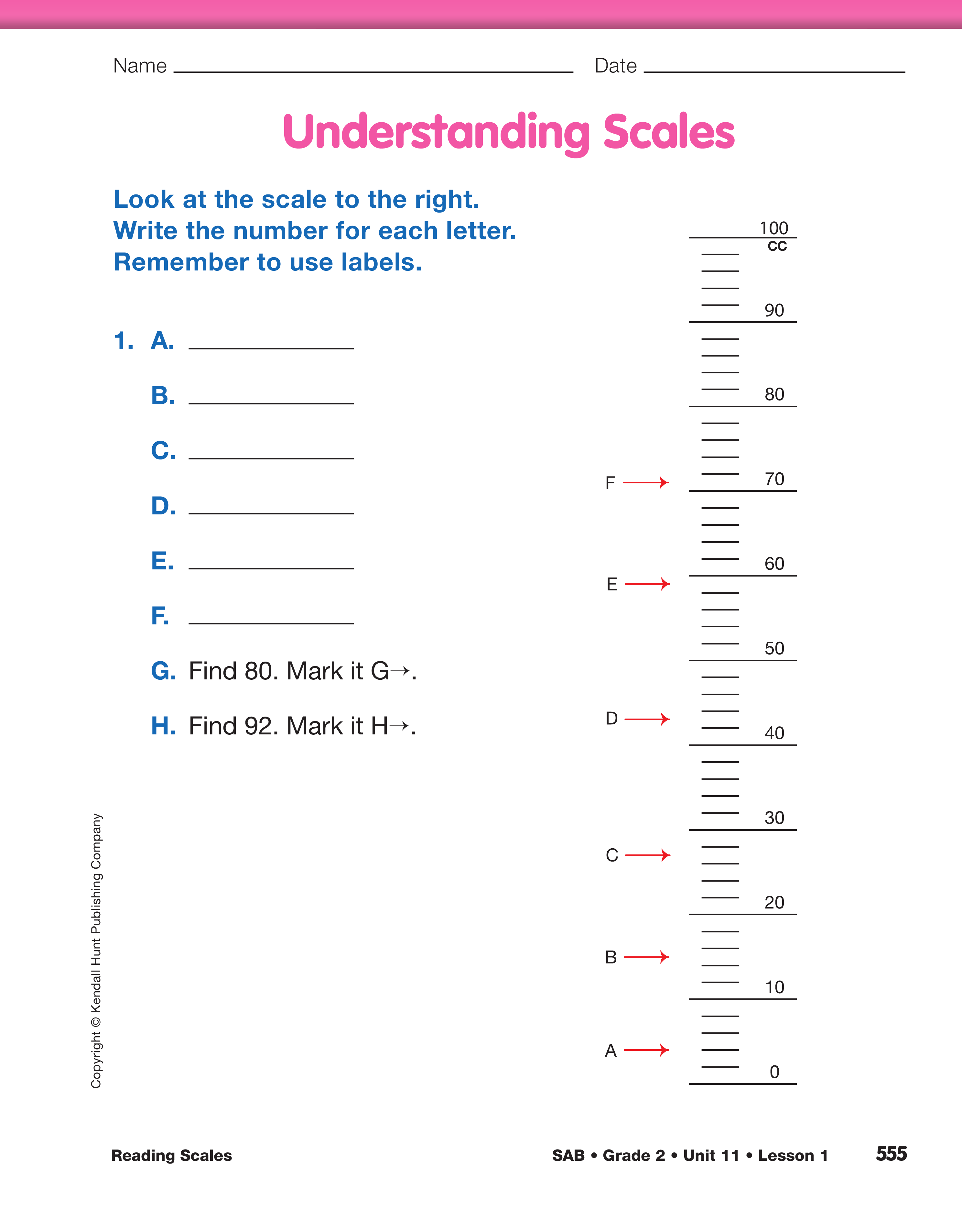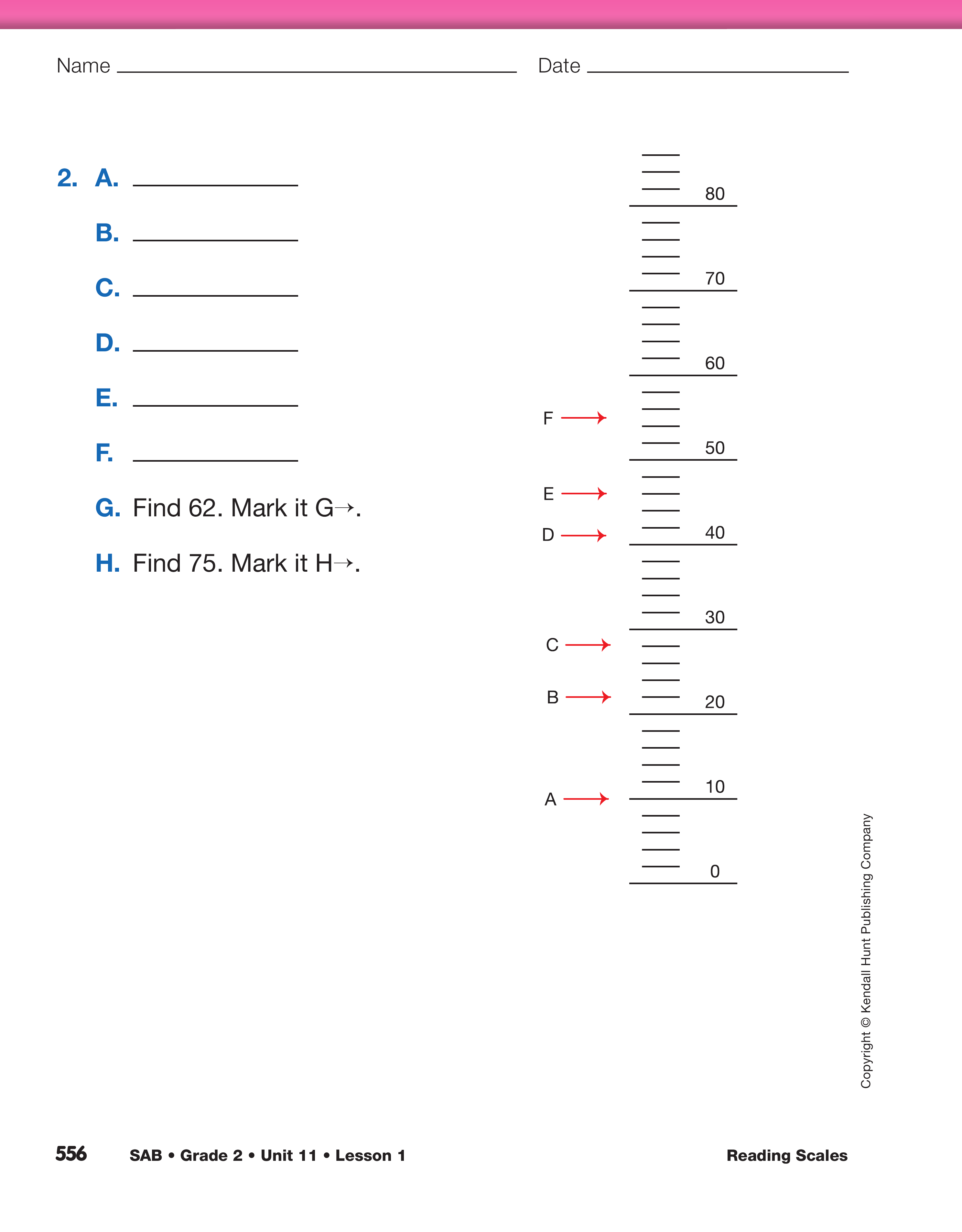To summarize the lesson, play a game of "thumbs
up, thumbs down." Have students think about all the
differing scales they observed and read today. Tell
them you are going to make statements about scales
and they should signal "thumbs up" if they agree
with the statement, or "thumbs down" if they disagree.
If the answer is a "thumbs down," discuss
why and have students correct the statement.
Use
statements similar to the following:
- All scales go up and down, or vertically. (Thumbs
down: many scales are vertical, but some can be
other shapes like those on a speedometer or bathroom
scale, which are often curved.)
- All scales have numbers and lines or dots with
spaces between them to show measurements. (thumbs up)
- Every line or dot on the scale is labeled with a
number. (Thumbs down: most scales do not number
every line or dot; too many numbers may
make it difficult to read and they may not fit.)
- All scales have the same number of lines or dots. (Thumbs down: scales measure many different
things and amounts so the different scales have
different numbers of lines; all scales do not show
a line for every number, like it might have one
line for every two units, or every five units like
the speedometer.)
- All scales have a zero. (thumbs up)
- All scales start or end with the same numbers. (Thumbs down: some scales, such as a thermometer
showing negative numbers, go higher
or lower than others.)
- All scales use the same unit of measurement. (Thumbs down: the unit of measurement depends
upon what is being measured; for example, speed
is measured with mph, but liquids are measured
with cubic centimeters.)
- Scales are numbered in different ways such as by
twos, five, tens, twenties, etc. (thumbs up)
- What do you need to remember to do before taking
measurements on each scale you use? (You have
to remember to check how to read the scale to
find measurements, like how it skip counts and if
there's a line for every unit. Then you can count
up or down using the numbers and the lines on
the scale to help you.)
To conclude the lesson, have students complete the
Understanding Scales pages from the Student
Activity Book independently. Remind students to
label answers. When finished, ask them to share how
they found the numbers 62 and 75 on the scale in
Question 2.
Use the Understanding Scales pages from the Student
Activity Book to assess students' abilities to read and
interpret a variety of scales [E4] and to use labels [MPE6].
















